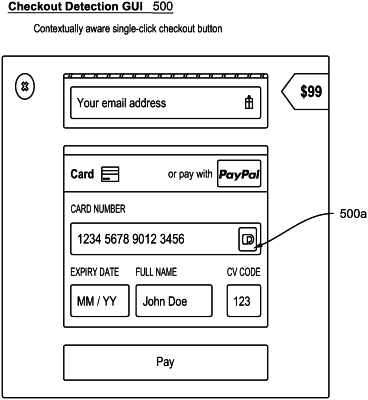| CPC G06Q 20/401 (2013.01) [H04L 9/14 (2013.01); H04L 9/30 (2013.01); H04L 9/3247 (2013.01); H04L 63/0442 (2013.01); H04L 63/0407 (2013.01); H04L 63/06 (2013.01); H04L 2209/56 (2013.01)] | 20 Claims |

|
1. A method comprising, by one or more computing devices:
receiving, at a privacy transaction server, from a privacy component on a user device, a first request for a privacy transaction card, the first request comprising a plurality of transaction metadata strings associated with a pending transaction between the user device and a first merchant server;
analyzing, using a machine learning model associated with the privacy transaction server, the transaction metadata strings in the first request to determine a risk assessment score for the first request, wherein the machine learning model is trained to determine a risk assessment score for a received request based on a plurality of second requests stored in a privacy transaction database associated with the privacy transaction server;
determining whether the risk assessment score for the first request exceeds a specified risk threshold associated with the pending transaction;
generating, responsive to determining that the risk assessment score for the first request is below the specified risk threshold, a privacy transaction card comprising a unique privacy payment card number associated with the user device and the first merchant server; and
transmitting, to the privacy component on the user device, the privacy transaction card.
|